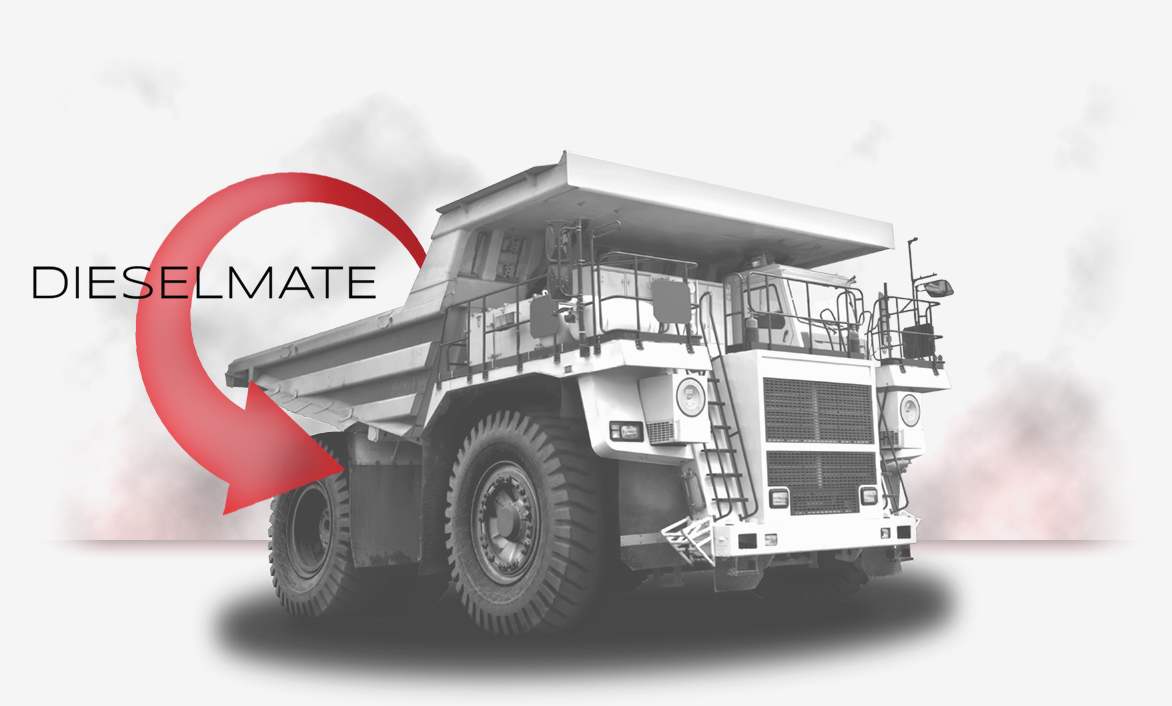
Certified Fuel Quality
Assurance Program™
DIESEL-MATE™ ALL SEASONS DIESEL-MATE™ 2000 ALL SEASONS ARCTIC DIESEL-MATE™
TANK TONIC™ BIODIESEL-MATE™ FIRE-UP!™ DZL CLEAN™
THAW-OUT™ MILE-HI™ FULL-BLAST PLUS™
Diesel Fuel Is Often A Company’s Largest Expense.
Unfortunately, There is very little control over its quality.
Fuel Quality Has Declined...

“Over the last two decades, the cetane number and the API gravity, the basic measures of crude oil quality have declined.”
—Society of Automotive Engineers,
(SAE) Bulletin 872243
"Diesel fuel quality has deteriorated for the past 20 years and is expected to continue this trend for the foreseeable future.”
–American Society for Testing and
Materials, (ASTM) Pub. # 10056
Fuel Quality Has Deteriorated Because...
- Rougher grades of crude are being extracted.
- Producers take shortcuts in refining.
- The best parts of crude are being used to produce gasoline, jet fuel & kerosene.
- The refining process used to meet new EPA regulations on ultra-low sulfur diesel (ULSD) results in reduced fuel economy and severe fuel system wear.
- Increased use of Biodiesel
Diesel Fuel Quality Deteriorates
Everytime it's handled
Industry surveys show that low quality diesel fuel is the #1 Cause of poor engine performance.
1
Oil Well
2
Refinery
3
Pipeline
4
Terminal
5
Fuel Jobber
6
Delivery Truck
7
Storage
8
Equipment
Decline Of Cetane Number
The Engine Manufacturing Association (EMA) Requires a Minimum of 50 Cetane for Optimal Performance
Below 50 Cetane Fuel Causes:
- Increased stack emissions.
- Poor combustion efficiency, loss of power, and lower mileage.
- Harder starting.
- Detonation wear - from violent explosions which damage piston heads, rings, valves, and cylinder liners.
- Increased wear on electric system

To reduce stack emissions, the EPA mandates Ultra-Low Sulfur Diesel fuel contain no more than 15ppm of sulfur.
The removal of most of the sulfur, the natural lubricant in diesel fuel can cause two major wear problems in fuel injection systems:
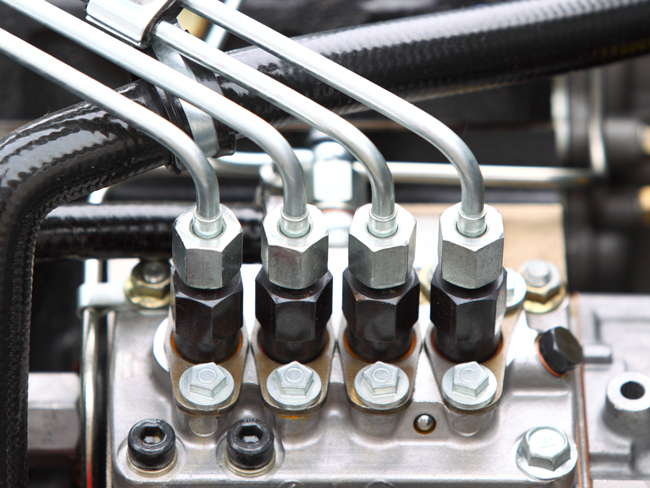
Since 1993, injection system wear has increased 500%.
Mechanical Wear: the removal of sulfur causes the fuel to become very dry.
This results in 5 times more scuffing wear in fuel injection systems.
Chemical Wear: The hydrotreating process used to remove sulfur also removes natural corrosion inhibitors in diesel fuel. This causes the fuel to become corrosive.
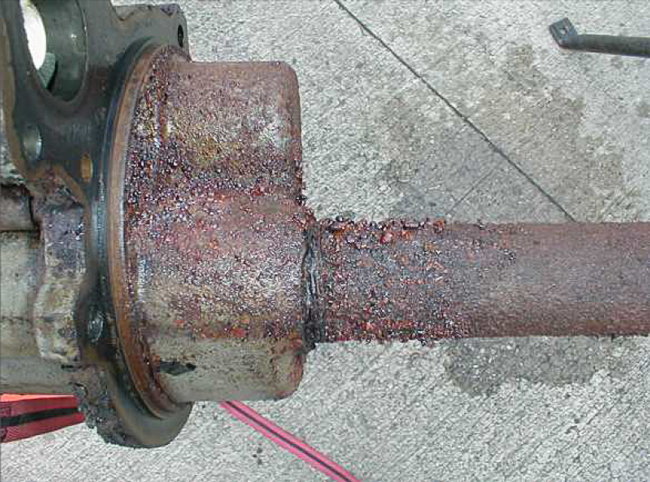
Flash Rusted Fuel Storage Tank Pump.
Worn injection systems result in poor fuel economy, excessive stack emissions, equipment down time and engine repair cost...
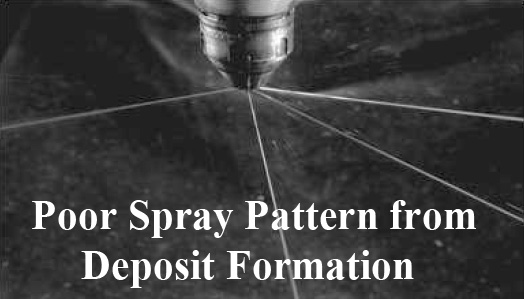

Contaminants Form Deposits:
Today’s diesel fuel contains high levels of contaminants that clog injectors and contribute to air pollution.
Carboxylate Deposits:
Waxy soaps in ULSD fuel that clog high pressure common rail injectors in newer engines.
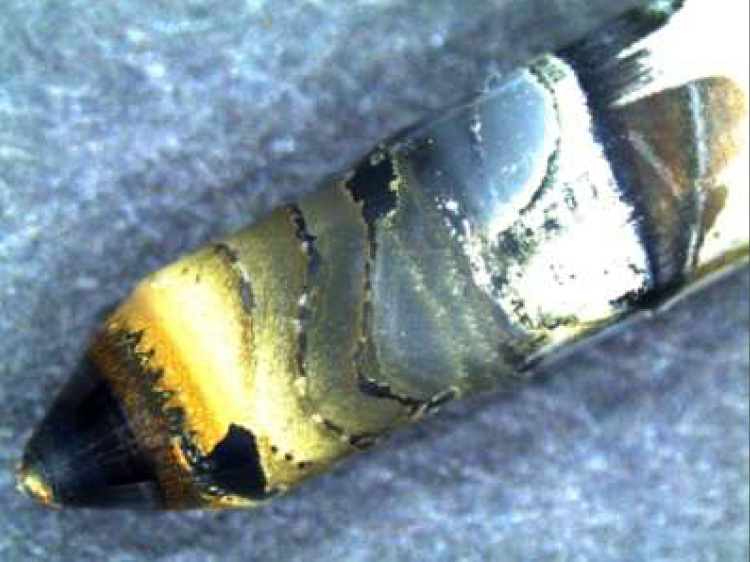
Carboxylate deposits on clogged injector
Wax:
found in diesel fuel gel's at low temperatures causing filter plugging and starting problems.
Biodiesel:
contains glycerides which naturally becomes thick at low temperatures causing filter plugging and starting problems.
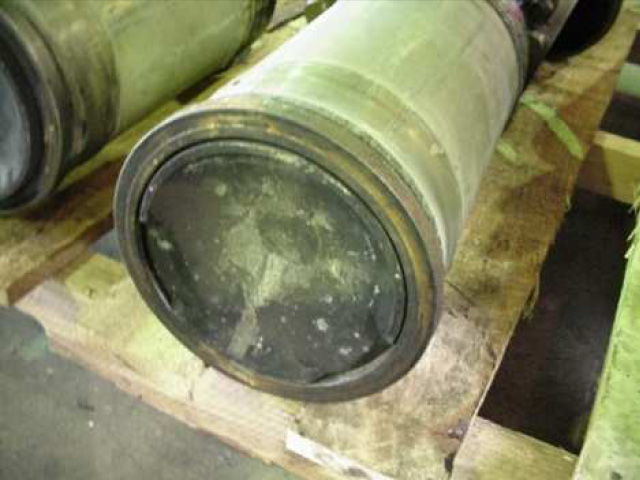
Deposits on Piston Crown
Acids:
Some contaminants in diesel fuel form acids in the combustion process resulting in corrosive wear, ring deterioration, blow-by, and loss of compression. FQ5 Poor Spray Pattern from Deposit Formation Good Spray Pattern - Deposit Free Deposits on Piston Crown PROBLEM #3: Biodiesel: contains glycerides which naturally becomes thick at low temperatures causing filter plugging and starting problems.
Condensation, rainwater, and seepage cause water contamination in fuel.
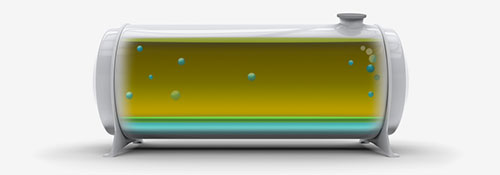
Water settles on the tank bottom, clings to the side walls and emulsifies with fuel
Water Causes:
- Poor combustion
- Clogged filters
- Rust and corrosion
- Fuel line freeze ups
- Bacterial and fungal growth
Biological Growth:
Bacteria and fungus enter fuel through water contamination or air vents. Biodiesel is especially susceptible to biological growth

There are 14 types of bacteria and 7 types of fungus that feed on the hydrocarbons in diesel fuel.

Biological Growth Causes:
- Slime formation and bacteria feces which clog filters and injector tips
- The formation of corrosive acids which can cause leaking storage tanks and worn injectors.
Studies have shown that diesel fuel degrades as much as 26% after just 28 days of storage
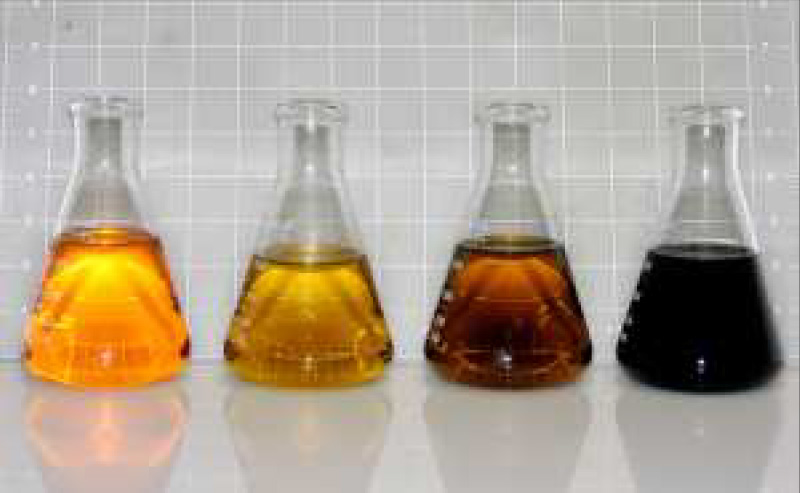
Diesel fuel darkens as it degrades
Oxidation:
When diesel degrades it darkens, and develops sludge and sediment. This leads to plugged filters, starting problems, poor engine performance, lower fuel economy and reduced engine life.
Contaminants, Light & Heat:
Water, microbial growth, corrosion, sunlight, and high temperatures all influence the speed of diesel fuel degradation.
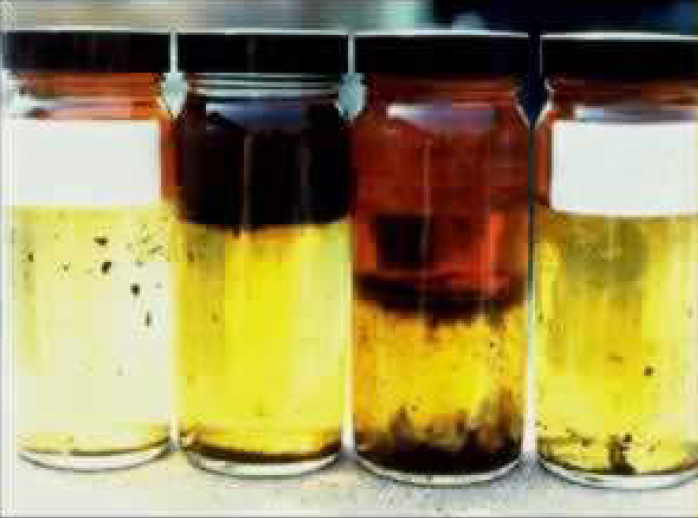
Oxidized diesel fuel samples
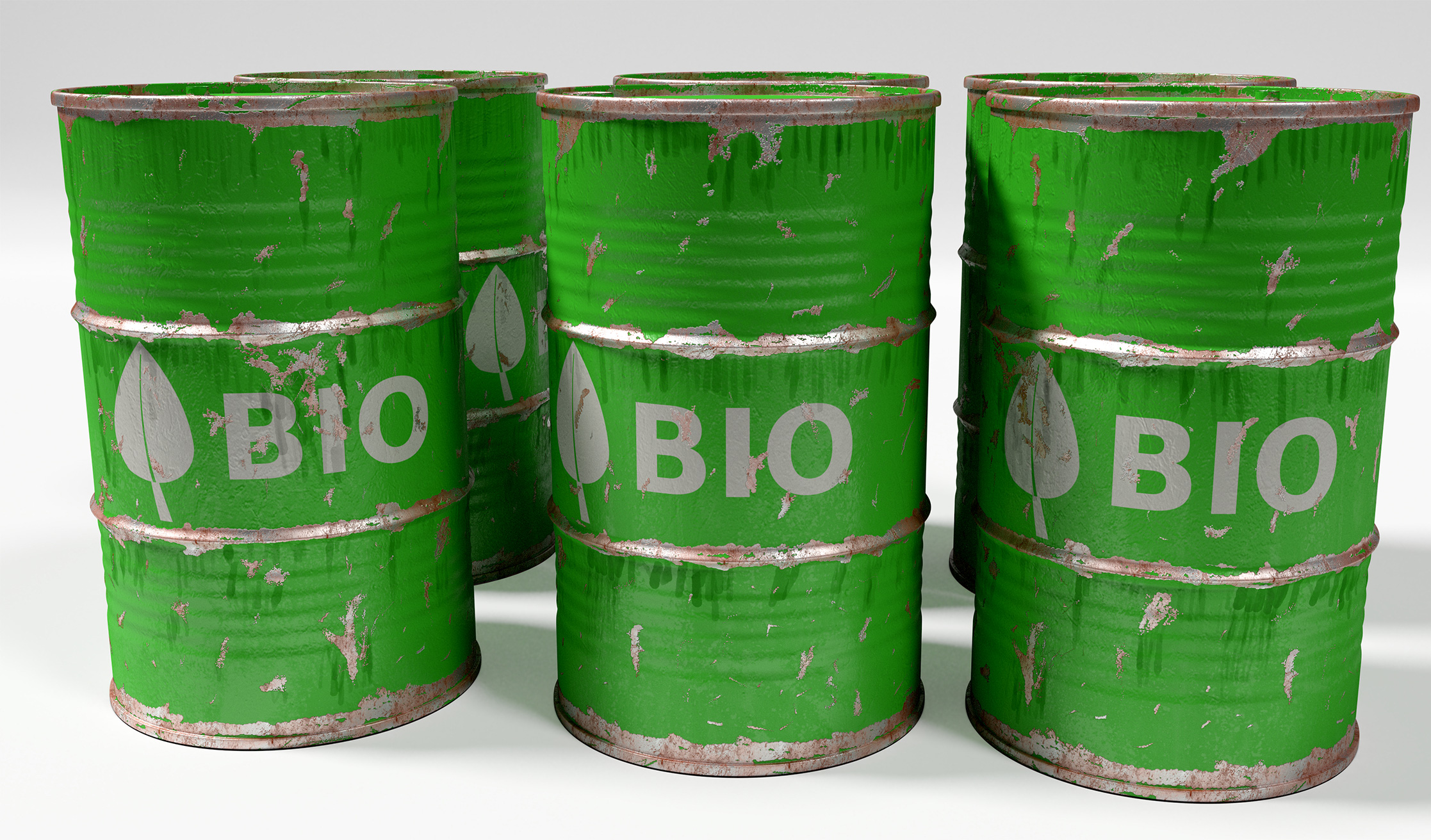
Biodiesel:
One of the major problems with biodiesel is its poor oxidation resistance, susceptibility to water degradation and microbial growth. The result is limited storage stability.
New engine technology has been developed to meet the EPA’s reduced emissions standards
Tier 4 Engines Produce 99% Less NOx and PM Emissions than 1996 Engines
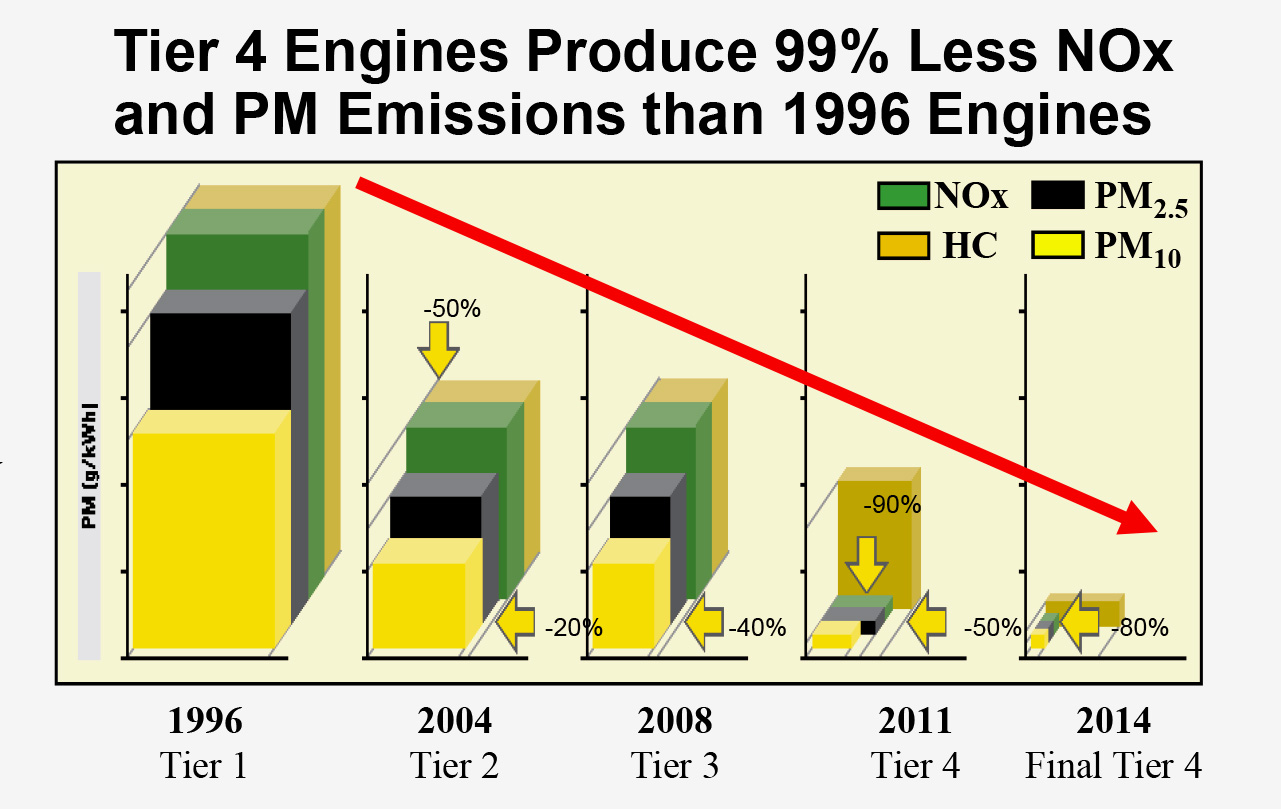
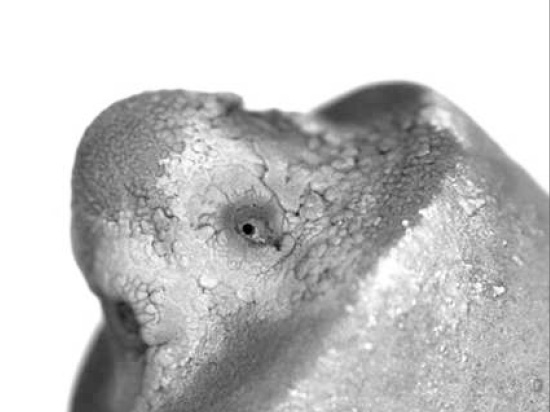
Close up of injector tip deposit
Sticking HPCR Fuel Injectors:
To produce a more complete fuel burn and reduce emissions, new high-pressure common rail injectors work at 20,000 psi and inject up to 3 times per stroke.
Even microscopic deposits from poor fuel quality on these HPCR injectors will reduce engine efficiency.
Clogged EGR Valves:
EGR valves re-circulate up to 80%of exhaust back into the combustion chamber to burn un-burned fuel, hydrocarbons and residual nitrous oxide.
Poor fuel quality clogs EGR valves with soot. The result is over-boosting turbo chargers, high coolant temperatures and poor engine efficiency.
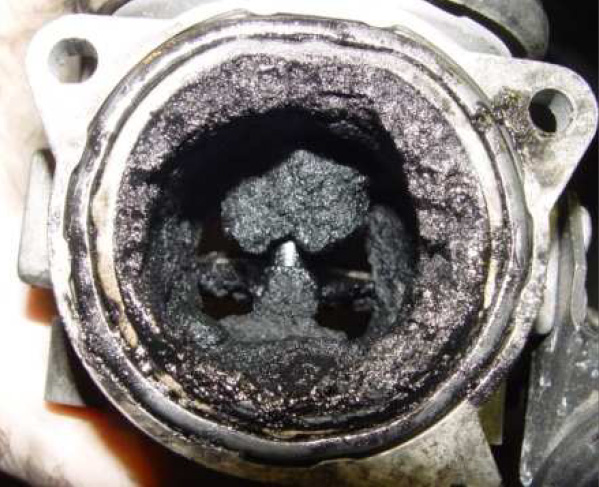
Clogged EGR Valve
The best solution to better engine performance is to consistently improve the quality of the fuel that we run through our equipment...